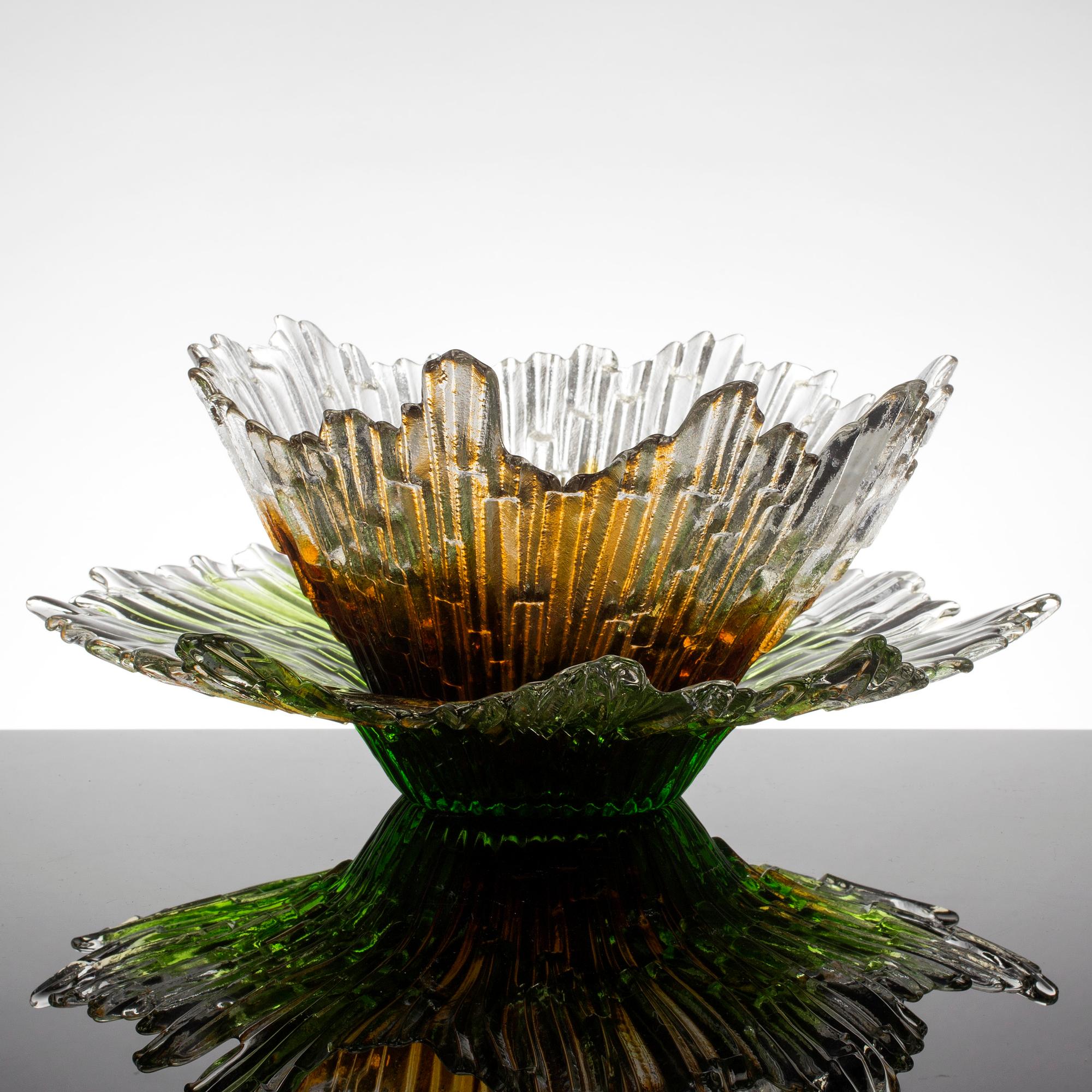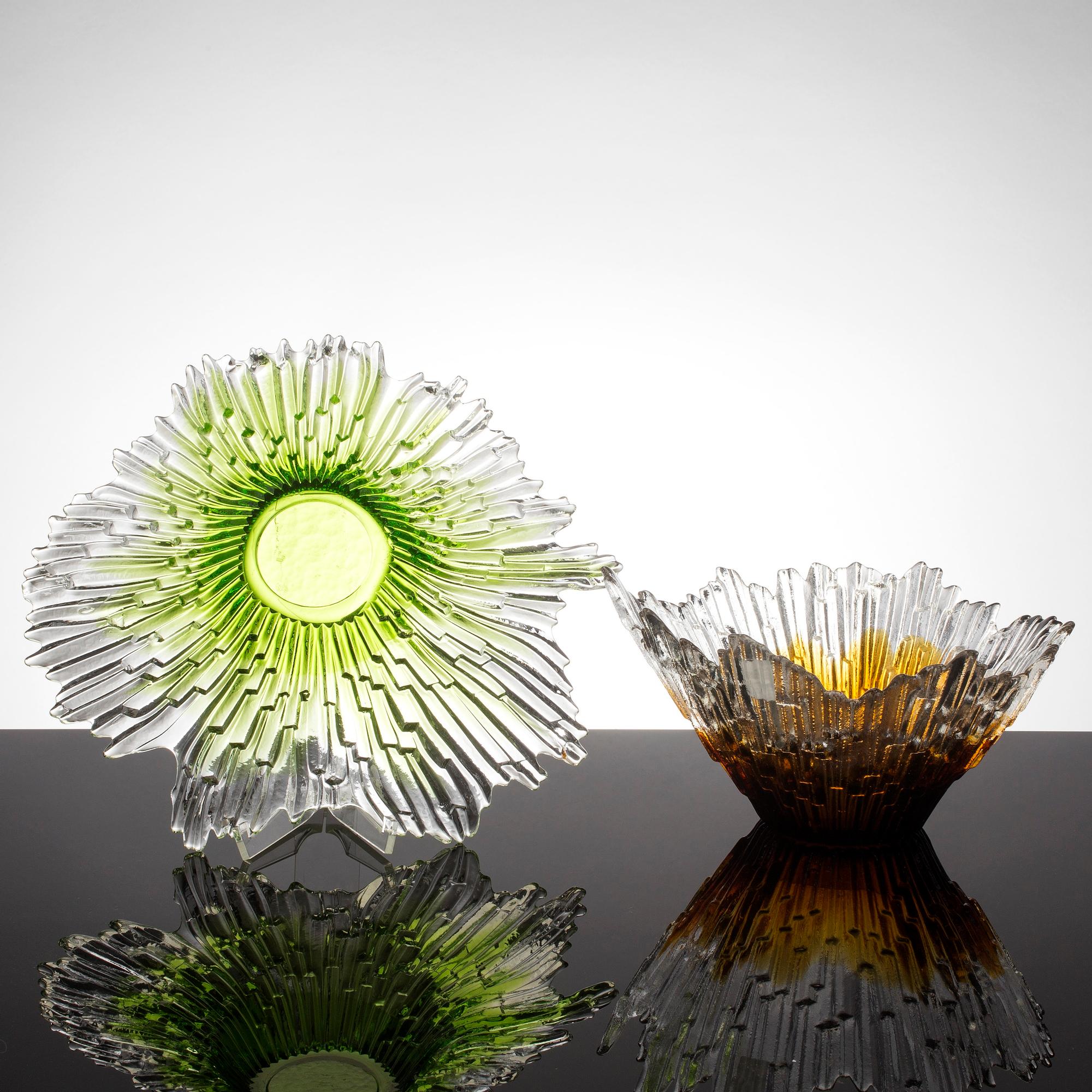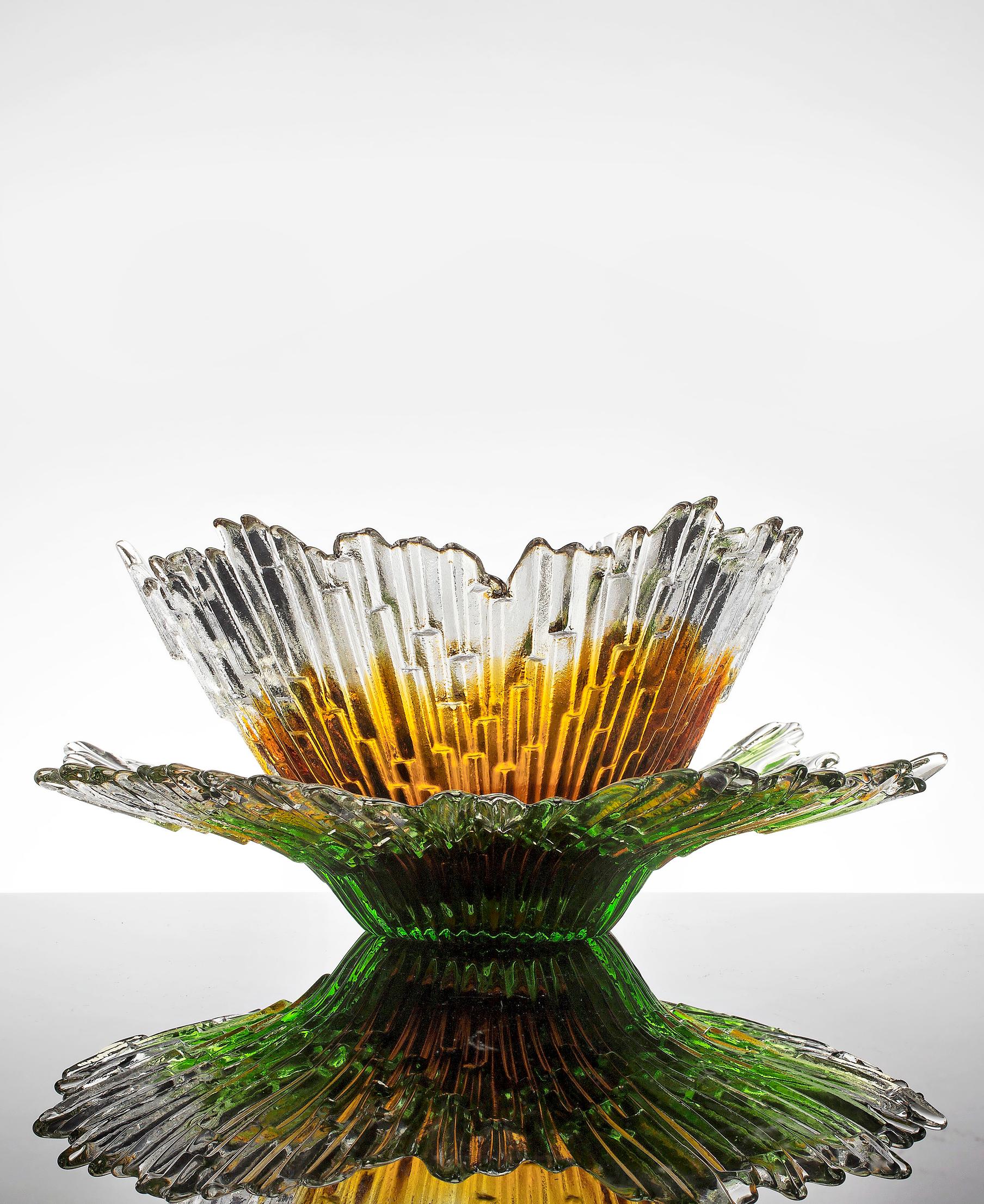
Got one of the rough-looking Humppila glass vases sitting around? It might still be in demand
During the 1970s, many who reached a milestone birthday received a Humppila vase or bowl, which resemble a volcanic eruption. The textured style was born by accident.
In the 1950s and 1960s, a refined look and streamlined shapes were the undisputed strengths of Finnish glass design. But in the 1970s, the style took a turn toward more primal, untamed natural forces.
Considered the rebel child of the industry, the Humppila glass factory introduced textured, hefty, and colorful decorative items that appealed to mainstream tastes.

Humppila’s textured style originated from an unfortunate experiment in 1967. The workshop tried using cheaper aluminum sheet molds, but molten glass melted the aluminum. In an effort to make them withstand the heat, the molds were wrapped in damp paper to cool them down. However, the water started boiling, causing the molds to tremble, which resulted in a glass item with a bumpy texture. This visually striking mishap was later developed into the Fantasia series, and the accidental discovery would come to define the entire factory’s future output.

In the 1970s, Humppila took the textured style a step further by introducing centrifugal casting—an ideal technique for creating thick, colored glass pieces. The Revontulet (“northern lights”) series (1972) by designer Tauno Wirkkala, along with other multifaceted pieces, gave the glass a bold new look.
Although textured glass isn’t widely collected as of yet, decorators who track trends have already discovered its oddly compelling appeal.


